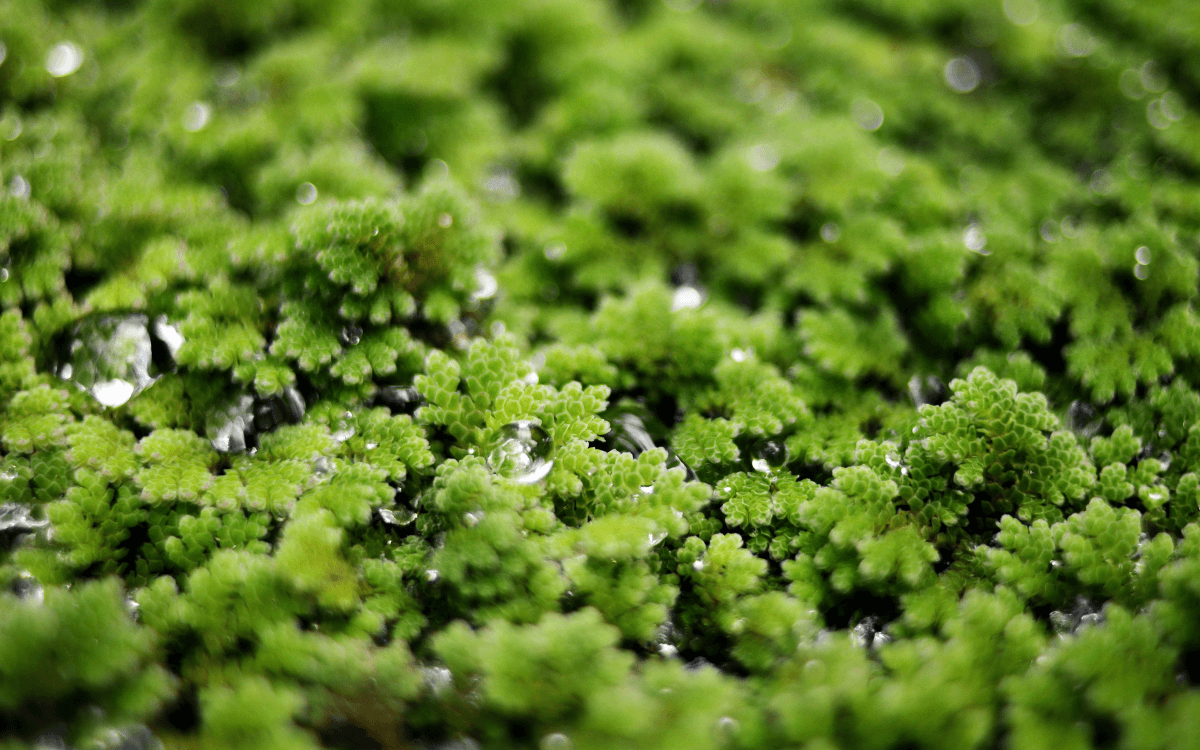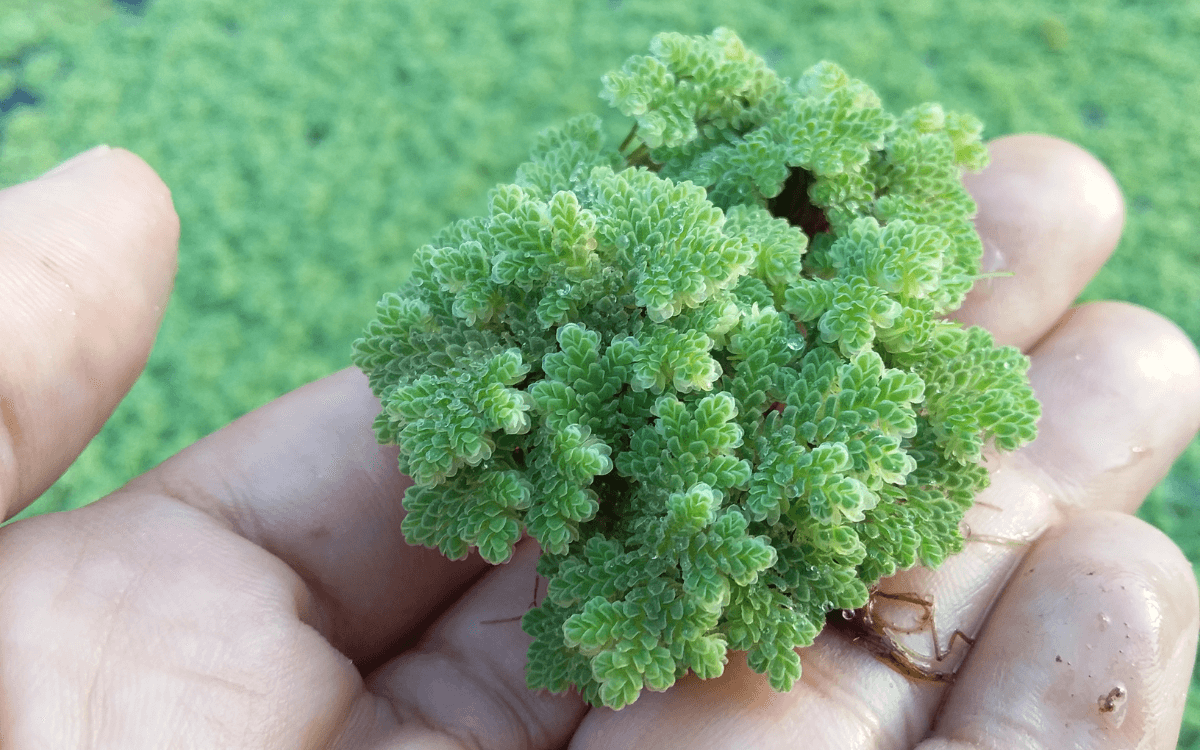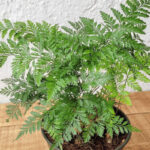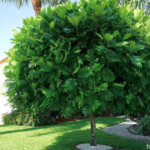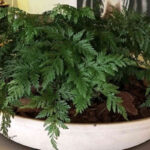Azolla (mosquito fern) is not only a plant that beautifies aquatic environments, but it also revolutionizes agricultural and food practices.
This species has a history dating back to 540 B.C., when it was used as green manure in Asia.
Today, this small aquatic plant plays a crucial role in agriculture, especially in rice cultivation, significantly increasing production in various parts of the world.
Its ability to fix atmospheric nitrogen makes it a valuable resource, not only for rice cultivation but also for animal feed and as fertilizer after composting.
In this article, we will delve into the fascinating world of Azolla, exploring its unique characteristics, benefits, and the crucial role it plays in the ecosystem and agriculture.
Continue reading to discover how this modest plant can have such a great impact.
Plant Characteristics
Mosquito fern, a small and floating aquatic plant, is recognized for its unique characteristics and significant benefits for both aquatic ecosystems and agriculture.
This plant belongs to a genus that encompasses seven distinct species, each contributing uniquely to its environment.
The leaves of Azolla are small, floating, and usually a light green, although they can display various shades of red, adding a vibrant touch to any aquatic environment.
A notable feature of these leaves is the presence of hydathodes, specialized structures responsible for water absorption.
Moreover, each leaf is divided into two lobes: a ventral and a dorsal. The dorsal lobe is particularly crucial for the plant’s flotation and is the site where the alga Anabaena resides, playing a vital role in absorbing nitrogen from the air.
Azolla’s ability to fix atmospheric nitrogen is what makes it extremely valuable in agriculture, especially in crops such as corn, rice, wheat, beans, and soybeans.
This ability to enrich the soil with nitrogen directly benefits these crops, improving their productivity and sustainability.
Beyond its role in agriculture, Azolla (Mosquito fern) is also a rich source of nutrients.
It grows rapidly and is abundant in proteins, vitamins, and minerals, making it a nutritious food option for both aquatic and terrestrial animals, including livestock and fish.
This nutritional composition makes Azolla a sustainable and resource-efficient alternative for animal feed.
Widely distributed in temperate and warm regions around the world, Mosquito fern not only brings beauty and diversity to aquatic ecosystems but also offers practical and ecological solutions to contemporary challenges in agriculture and animal nutrition.
The combination of its attractive aesthetics, unique ability to fix nitrogen, and nutritional value places it as a plant with multiple benefits for the environment and humanity.
Curiosity: in some countries, Mosquito fern is called aquatic fern or water fern.
Challenges in Large Properties
The cultivation of Azolla in large agricultural properties presents specific challenges. This plant requires prior soil preparation before planting crops like rice, as well as a considerable amount of inoculum to initiate its growth.
These processes demand qualified labor for efficient management, ensuring that the ideal conditions for Mosquito fern cultivation are met.
See also our article about the japanese fern tree.
Azolla in Agriculture
Azolla is highly valued in agriculture, especially in rice cultivation, due to its capacity for biological nitrogen fixation.
This ability results from a mutualistic symbiosis with the cyanobacterium Anabaena, allowing Azolla to fix nitrogen from the air and enrich the soil.
Studies indicate that including Azolla pinnata flour in the diet of laying hens can improve productive performance and egg quality, highlighting its added value in livestock farming.
Benefits and Disadvantages
Mosquito fern offers multiple benefits, but also faces challenges as a species.
In new environments, it can become invasive, affecting local biodiversity.
Its exuberant growth can block sunlight and reduce oxygen levels in water bodies, harming aquatic life.
However, biological control methods, such as the introduction of the weevil beetle, have proven effective in containing its spread.
Environmental Impact
Azolla has played a historical role in global climate regulation, contributing to the reduction of carbon dioxide levels in the atmosphere during the Eocene.
Currently, its ability to sequester carbon and remove heavy metals from water makes it a valuable tool in bioremediation projects, aiding in the depollution of aquatic ecosystems.
Use in Animal Feed
As an alternative food source for animals, Mosquito fern stands out, mainly for birds and fish. Rich in essential nutrients, it has the potential to reduce cholesterol levels, contributing to a healthier and more nutritious animal diet.
Legal and Ecological Considerations
Due to its invasive nature, the introduction of Azolla into the environment is regulated in some countries, such as Spain.
It is essential to adopt ecological practices to control invasive species and preserve existing aquatic biodiversity, maintaining a sustainable ecological balance.
Did you like this text? Then share it on your social networks and leave a comment below.


